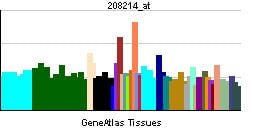Species Human Entrez 153 | Human Mouse Ensembl ENSG00000043591 | |
 | ||
Aliases ADRB1, ADRB1R, B1AR, BETA1AR, RHR, adrenoceptor beta 1 External IDs OMIM: 109630 MGI: 87937 HomoloGene: 20171 GeneCards: ADRB1 | ||
The beta-1 adrenergic receptor (β1 adrenoreceptor), also known as ADRB1, is a beta-adrenergic receptor, and also denotes the human gene encoding it. It is a G-protein coupled receptor associated with the Gs heterotrimeric G-protein and is expressed predominantly in cardiac tissue.
Contents
Actions
Actions of the β1 receptor include:
Agonists
Isoprenaline has higher affinity for β1 than adrenaline, which, in turn, binds with higher affinity than noradrenaline at physiologic concentrations. Selective agonists to the beta-1 receptor are:
Antagonists
(Beta blockers) β1-selective ones are:
Mechanism
Gs renders adenylate cyclase activated, resulting in increase of cAMP.
Gene
Specific polymorphisms in the ADRB1 gene have been shown to affect the resting heart rate and can be involved in heart failure.
Interactions
Beta-1 adrenergic receptor has been shown to interact with DLG4 and GIPC1. Interaction between testosterone and β-1 ARs have been shown in anxiolytic behaviors in the basolateral amygdala.
